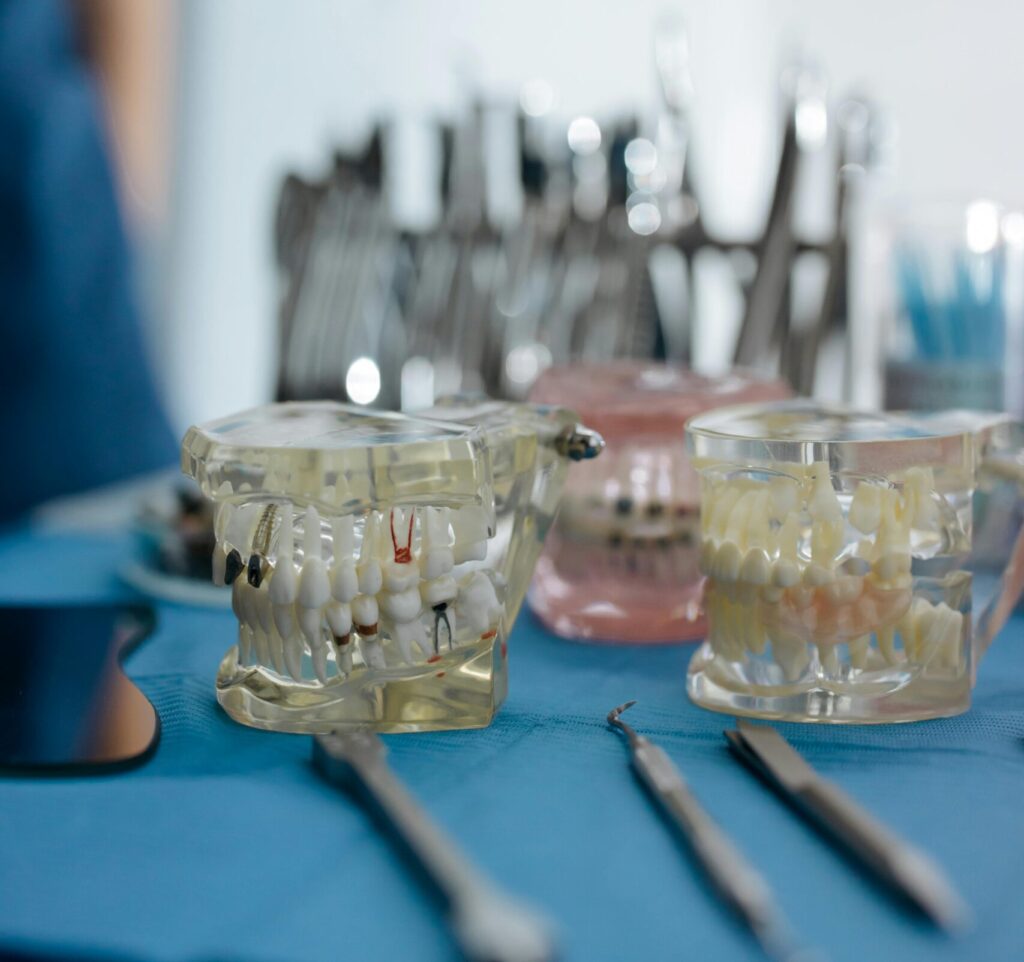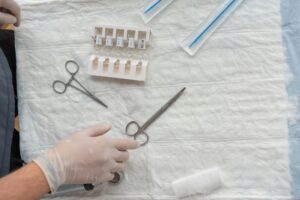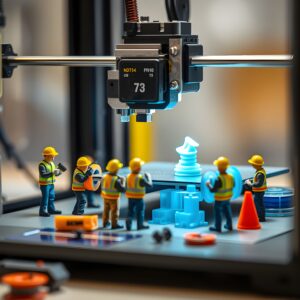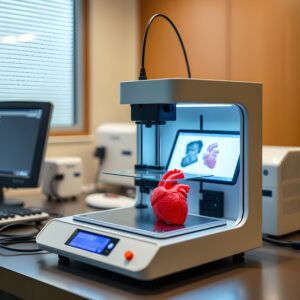How 3D Printing is Transforming Medicine: Innovative Case Studies and Breakthroughs

Explore the remarkable impact of 3D printing in the medical field through case studies and groundbreaking innovations. Discover how this technology is revolutionizing patient care, from custom prosthetics to bio-printed organs, offering cost-effective, personalized solutions.
The Promise of 3D Printing in Medicine
3D printing is revolutionizing healthcare, enabling the creation of complex, custom-made medical solutions that were once impossible. This technology, also known as additive manufacturing, allows for the layer-by-layer construction of objects from digital designs, using materials like biocompatible plastics, metals, and even cells. For the medical field, where precision, personalization, and efficiency are critical, 3D printing provides an unmatched level of innovation.
The applications of 3D printing in medicine span a wide range of uses, including custom prosthetics, orthopedic implants, surgical guides, and even the early stages of organ bioprinting. In this article, we’ll explore several case studies of how 3D printing is being used in healthcare, examine the transformative benefits it brings, and address common questions about the technology.
Case Study 1: Personalized Prosthetics and Orthotics
The development of personalized prosthetics and orthotics is one of the most impactful applications of 3D printing in healthcare. Traditionally, prosthetics were mass-produced in standard sizes, requiring multiple fittings and adjustments to match the patient’s unique anatomy. This was often costly, time-consuming, and uncomfortable for the patient. However, 3D printing enables the production of customized prosthetic limbs and orthopedic supports that fit perfectly.
A notable example of this is the work done by Limbitless Solutions, a non-profit organization dedicated to creating affordable prosthetic arms for children. Limbitless uses 3D scanning to capture precise measurements of a patient’s limb, then 3D prints a prosthetic arm that’s comfortable, functional, and aesthetically pleasing. This customization reduces the need for extensive adjustments and allows the patient to have a prosthetic that reflects their personality. By using 3D printing, Limbitless can produce these prosthetics at a fraction of the traditional cost, making them accessible to families who may not have been able to afford them otherwise.
Another example is the creation of 3D-printed scoliosis braces, which are designed specifically for the shape of each patient’s spine. This personalized approach not only improves comfort but also enhances the brace’s effectiveness in treating the condition.
Case Study 2: 3D Printing for Surgical Guides and Tools
3D printing has revolutionized surgical planning by enabling surgeons to create patient-specific surgical guides and tools. Traditionally, surgical tools and guides were mass-produced in standard shapes and sizes, which did not always meet the needs of every patient or procedure. However, with 3D printing, surgeons can now create custom guides tailored to each patient’s unique anatomy.
At the Mayo Clinic, for example, surgeons have used 3D-printed guides to perform complex spinal surgeries with unprecedented precision. By scanning the patient’s spine and creating a digital model, the surgical team can design a guide that fits perfectly, helping them place screws and rods with greater accuracy. This customization reduces the risk of complications, shortens the length of the surgery, and speeds up patient recovery.
Similarly, 3D printing has enabled the production of custom tools for procedures involving bone fractures or joint replacements. These tools, specifically designed for the patient’s anatomy, improve the surgeon’s ability to achieve a successful outcome. For instance, some tools include drill guides for precise alignment or resection guides that aid in removing bone exactly where needed.
Case Study 3: Bioprinting for Organ and Tissue Development
While still in the experimental phase, bioprinting holds promise for the future of organ and tissue replacement. Bioprinting involves using a 3D printer to create tissues by layering bio-inks made from living cells. Although we are not yet at the point of printing fully functional human organs, researchers have made significant strides in developing tissue structures for various medical applications.
A groundbreaking example of this is the work done by scientists at Wake Forest Institute for Regenerative Medicine. The team has successfully bioprinted human skin, cartilage, and bone, which could be used for skin grafts, reconstructive surgery, or bone repair. By using a patient’s own cells, these bioprinted tissues minimize the risk of rejection and provide a natural fit for the patient.
One of the most promising applications of bioprinting is in the development of liver tissue. The company Organovo has developed a 3D bioprinted liver tissue that can be used for drug testing. This breakthrough not only aids pharmaceutical companies in evaluating drug safety but also opens the door to future advancements in bioengineered liver transplants.
Benefits of 3D Printing in Healthcare
1. Customization and Personalization
One of the biggest advantages of 3D printing in medicine is the ability to create custom-made solutions that match each patient’s unique anatomy. For prosthetics, implants, and surgical guides, this means a better fit, greater comfort, and more effective treatment outcomes. Personalization also extends to aesthetic aspects, allowing patients to have medical devices that are visually appealing and aligned with their preferences.
2. Cost Savings
3D printing has significantly reduced production costs in the medical field. Traditional prosthetics and implants are expensive due to the labor-intensive process and the need for high-quality materials. With 3D printing, however, the production process is simplified, and material waste is minimized, making it a more cost-effective solution. In some cases, 3D-printed prosthetics cost less than a tenth of traditional ones.
3. Reduced Surgery Time and Enhanced Precision
3D printing enables surgeons to plan and rehearse surgeries more effectively, using patient-specific models. Surgical guides made through 3D printing allow for precise placement of instruments, reducing surgery time and lowering the risk of complications. This not only benefits the patient by shortening recovery time but also optimizes hospital resources by reducing the time needed in the operating room.
4. Increased Accessibility
3D printing has made it possible to produce medical devices in regions where traditional manufacturing methods are not available. For example, in developing countries, 3D printing allows local healthcare providers to produce prosthetics, orthopedic devices, and surgical tools without relying on expensive imports.
5. Reduced Risk of Infection and Complications
Custom 3D-printed implants and prosthetics can reduce the risk of post-surgical infections. By ensuring that each device fits perfectly and is made from biocompatible materials, the likelihood of complications is minimized. This is especially important for patients with unique anatomical challenges who would otherwise face a higher risk of infection or rejection with standard implants.
Frequently Asked Questions (FAQs)
Q1: How much does a 3D-printed prosthetic limb cost compared to traditional prosthetics?
A: 3D-printed prosthetics can cost as little as 10-20% of the price of traditional prosthetics. While traditional prosthetics may cost several thousand dollars, 3D-printed versions can be made for a few hundred dollars, depending on the complexity and materials used.
Q2: Is bioprinting fully developed for organ transplants?
A: Bioprinting technology is still in the experimental stage for organ transplants. While researchers have successfully bioprinted tissue, creating fully functional organs like hearts or kidneys is still years away. However, significant progress has been made in developing liver tissue for drug testing.
Q3: Can 3D printing be used to create implants for any part of the body?
A: Yes, 3D printing can be used to create a variety of implants, including those for dental, orthopedic, cranial, and spinal applications. The material used depends on the type of implant and its function, but 3D printing offers high levels of customization.
Q4: Are 3D-printed medical devices safe?
A: Yes, many 3D-printed medical devices have been approved by regulatory bodies like the FDA. However, safety depends on the materials used, the manufacturing process, and the specific application. Custom implants and surgical guides are usually subject to strict testing and certification before use.
Q5: How does 3D printing improve surgical outcomes?
A: 3D printing enables surgeons to plan and customize surgeries with patient-specific models and guides, improving precision and reducing surgery time. This helps minimize risks, enhance accuracy, and improve recovery times for patients.
Future Potential: Where is 3D Printing in Medicine Headed?
The potential of 3D printing in healthcare is vast and ever-growing. While prosthetics, implants, and surgical tools have already benefited, researchers are exploring other areas such as biofabrication, drug testing, and even pharmaceutical production. The following are some promising areas for future development:
- Bioengineered Organs for Transplant
With advancements in bioprinting, researchers are working toward creating functional organs like kidneys and hearts for transplants. While this is a long-term goal, progress in tissue engineering indicates that bioprinted organs could eventually address the shortage of transplantable organs. - Drug Testing and Development
Bioprinted tissues are increasingly used for drug testing, reducing the reliance on animal testing. By using human tissue, pharmaceutical companies can more accurately predict a drug’s effect on human patients, accelerating the approval process and enhancing drug safety. - Personalized Pharmaceuticals
3D printing could soon be used to create custom medications tailored to individual patient needs. By adjusting the dose and combining multiple drugs into one pill, 3D printing can provide personalized medicine, which would be especially beneficial for patients with chronic conditions requiring multiple medications.
3D printing is a transformative technology in medicine, providing new possibilities for personalized healthcare, surgical precision, and cost-effective solutions. Through the case studies on prosthetics, surgical guides, and bioprinting, this article demonstrates the immense potential of 3D printing to revolutionize the medical field. The future of 3D printing in healthcare looks promising, with ongoing research and advancements paving the way for even more life-changing applications.





